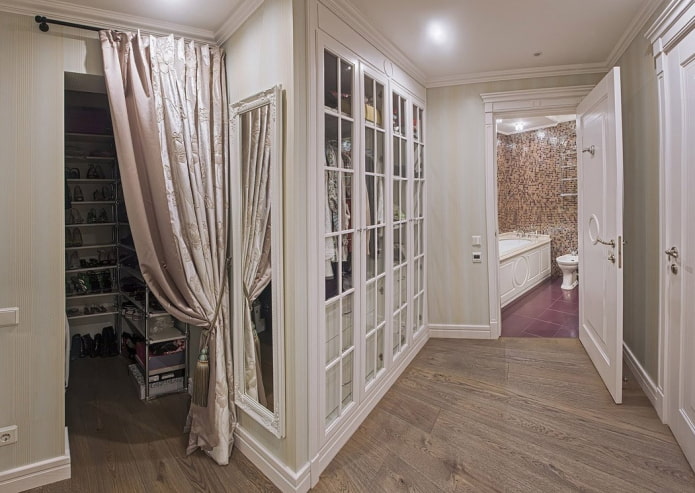Doorway Finishing Options
A wide variety of finishing materials are used to complete a doorway without a frame.
Wallpaper
Finishing a portal with liquid or paper, vinyl, non-woven or other types of wallpaper allows you to take a particularly creative approach to design and transform an ordinary interior, making it truly elegant and fashionable.
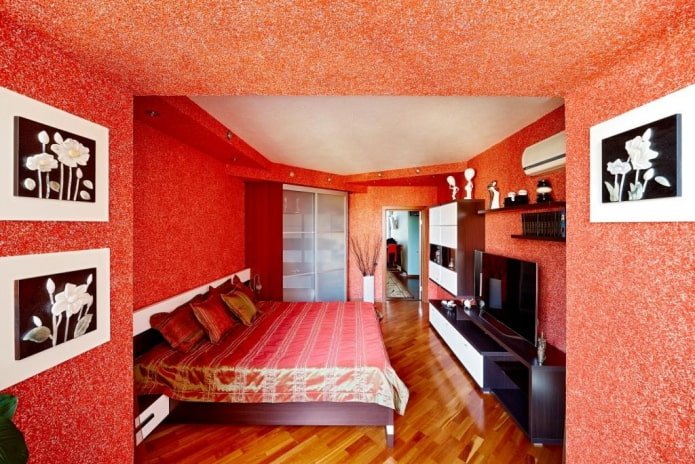
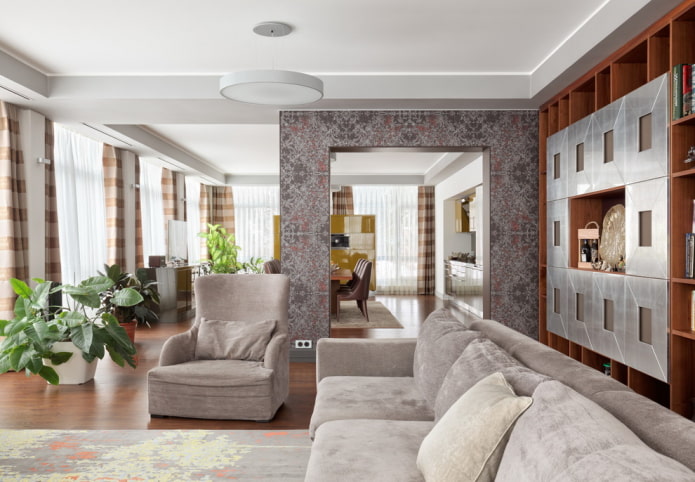
Laminate
Laminated panels, which are distinguished by a variety of textures, colors and easy installation, provide an excellent opportunity to create a rather interesting design in any style, for example, minimalism, modernism and others.
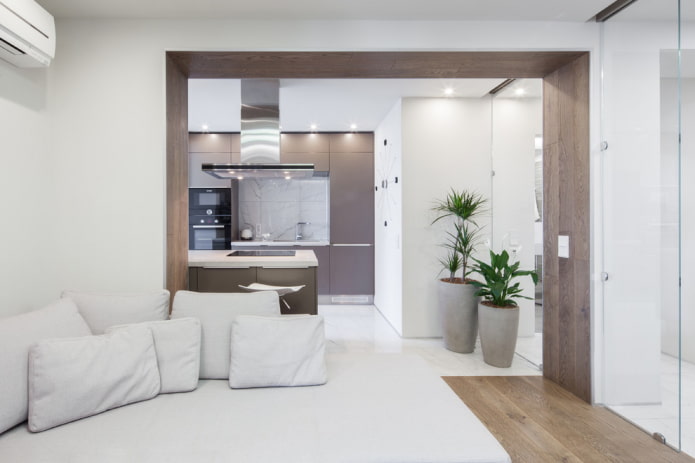
The photo shows a rectangular doorway without a door, lined with laminate in the interior in a modern style.
Plaster
This The finish has a unique visual depth and can imitate, for example, marble tiles, various rocks or other textures. In addition, due to its structural nature, Venetian plaster allows you to create a variety of patterns and effects on the surface.
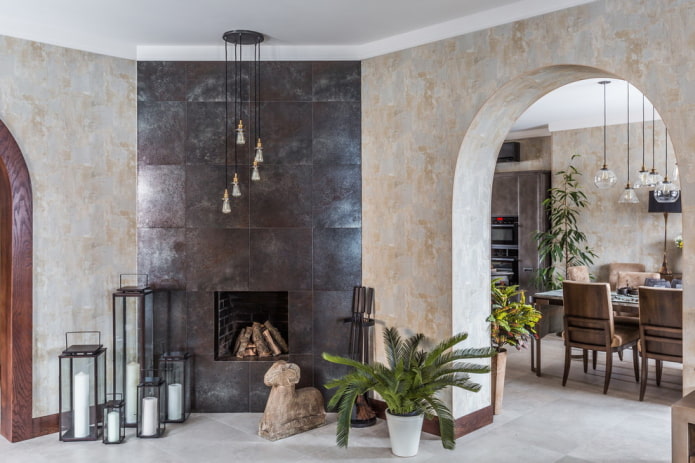
Wood trim
Wooden trim is perfect for any style solution and for cladding an entrance with a threshold. It can be distinguished by its simple appearance or be decorated with figured carving.
Another important advantage of this material is its environmental friendliness.
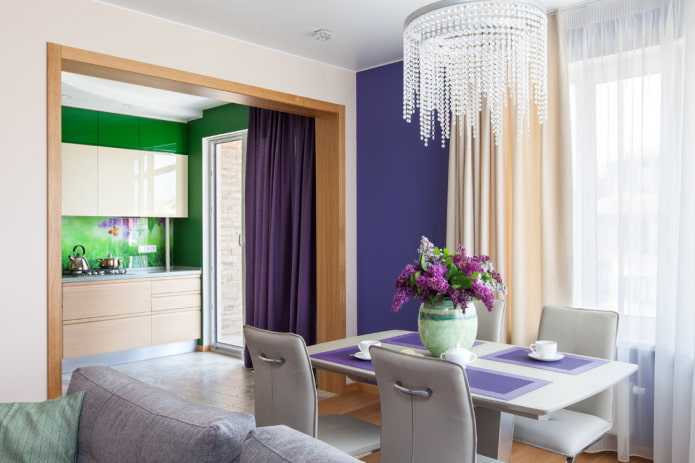
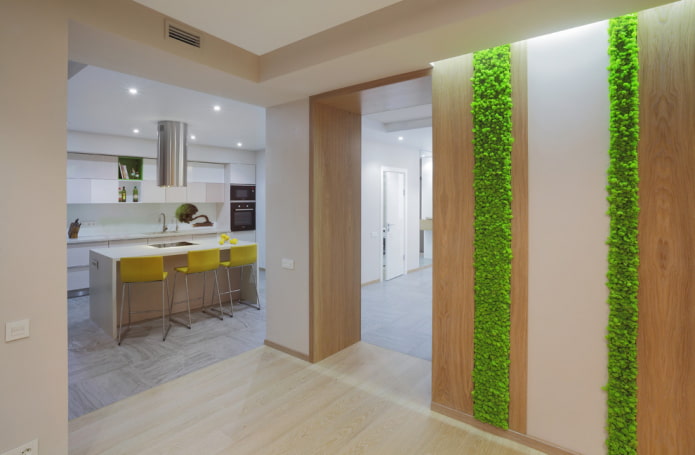
Stone
It is a very popular finishing option for an opening without doors. Artificial or natural stone, such as limestone, marble, malachite and many others, will bring a touch of the Middle Ages to the decor and create a unique design, most often used for rustic country or Provence styles.
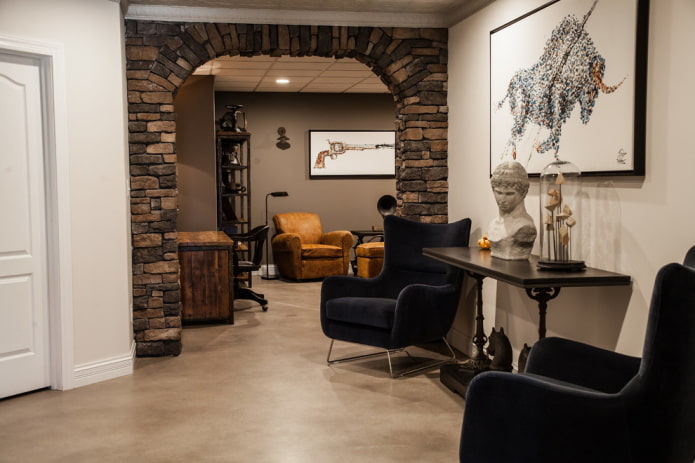
The photo shows stonework in the design of a doorway without doors in the interior of the hall.
Decorative brick
Charismatic and aesthetic brickwork, both outside and inside the entrance, combined with other less textured planes, creates a rather original contrast, focuses attention and places the necessary accents.
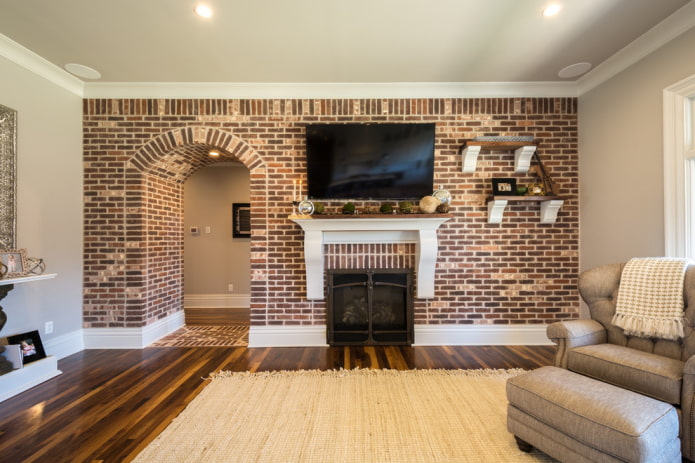
Tiles
With the help of clinker tiles, which can be not only straight, but also angular, it is easy to beat and decorate doorways, both of a traditional rectangular shape, and passages in the form of an arch or semi-arch.

In the photo kitchen-living room with a doorway without a door, decorated with dark tiles.
MDF panels
They are quite a beautiful, high-quality and at the same time inexpensive finish for a portal without doors. MDF panels are easy to machine, are easy to install, maintain and operate.
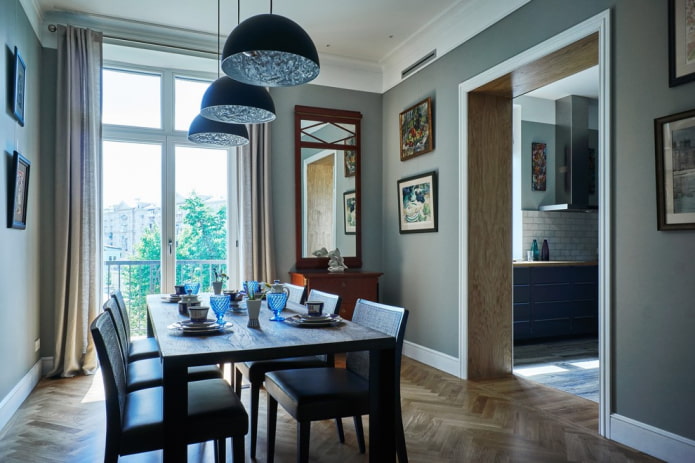
PVC panels
Due to their flexibility, they are perfect for doorways of various shapes, heights and widths. The plastic coating can have a textured wood pattern or differ in other wide variety of colors.

Textiles
It is considered a fairly simple design option that will allow you to create a secluded, cozy, homely chamber atmosphere and close the space from views, without cluttering the interior.
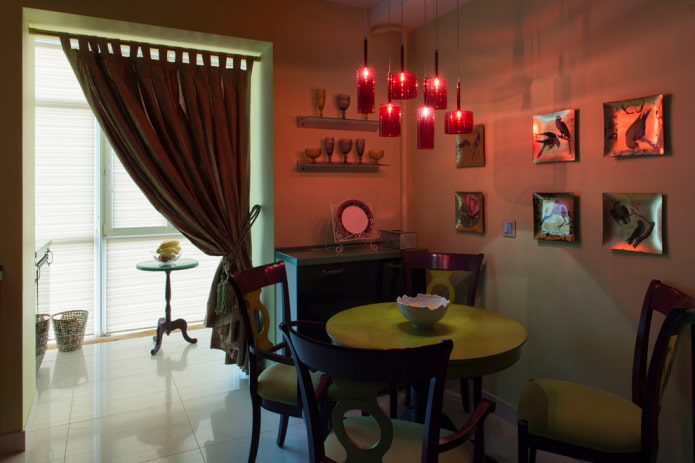
The photo shows a kitchen with an exit to the balcony, decorated with textiles in in the form of a thick curtain.
How to decorate an opening without a door?
A properly decorated door portal without a door will not look alien and thoughtless.
With curtains
An opening decorated with a beautifully draped curtain will become a real decoration of the interior with the appropriate design.

Finishing with platbands and extensions
Extensions made of plastic, wood or MDF in combination with flat, voluminous, rounded or platbands of a different shape allow you to simply and tastefully ennoble the door passage.

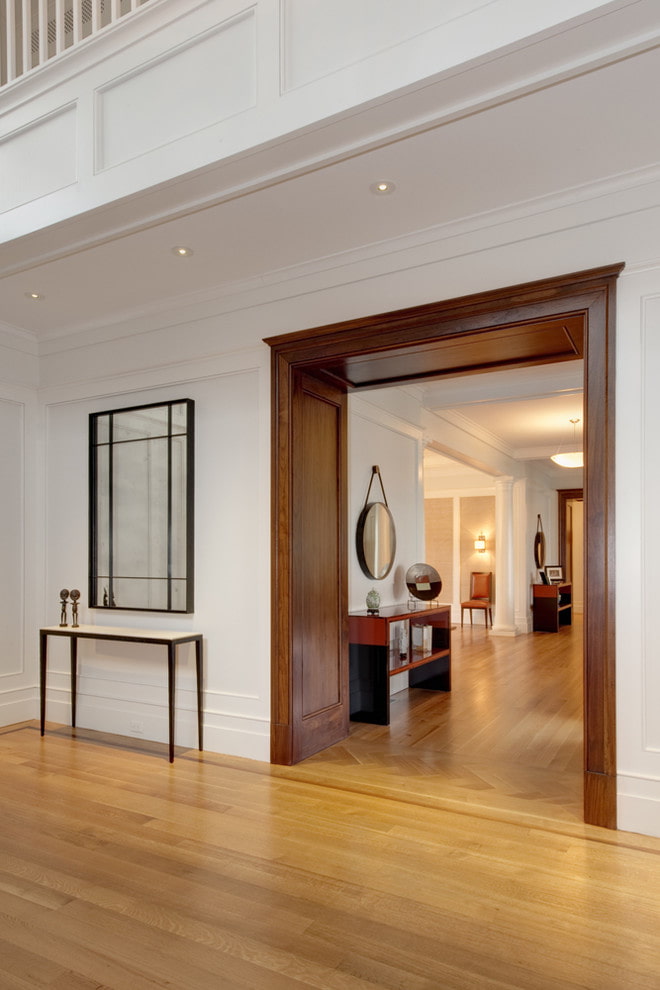

The photo shows a doorway without a door, trimmed with wooden trim and extensions in the interior of a kitchen-dining room in the Provence style.
Baguette
A decorative baguette strip gives the passage a new sound, due to which it fits even more organically into the surrounding space.
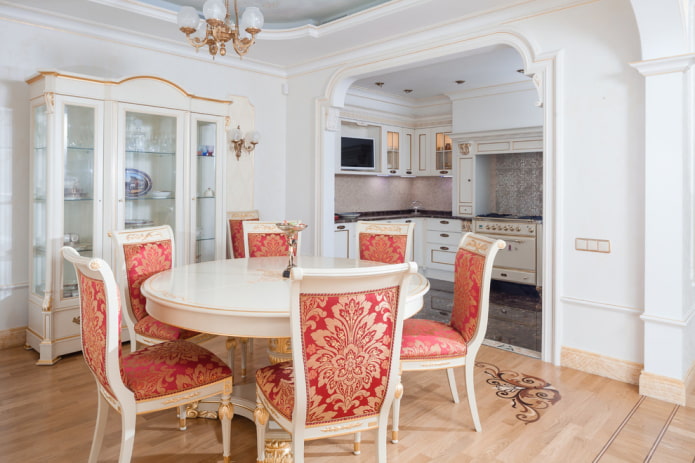
Decorative corners
This edging has high practical and aesthetic value. It not only adds a more harmonious appearance to the opening, but also protects it from damage and hides some surface defects.
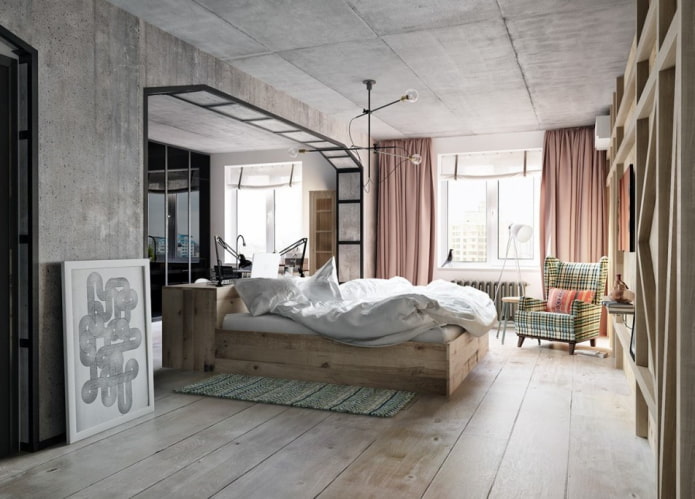
The photo shows a loft-style bedroom and a trapezoidal doorway framed with decorative corners.
Mosaic
Due to its charming appearance, mosaic noticeably transforms any environment. Such artistic decor is distinguished by its uniqueness, practicality and unrivaled style, which provides an opportunity to create an original design.

Stucco molding
Stucco polyurethane or gypsum decor on door slopes, with a combination of graceful lines and light forms with deep relief, gives the portal an airy luxury and adds a certain aristocracy to the interior.
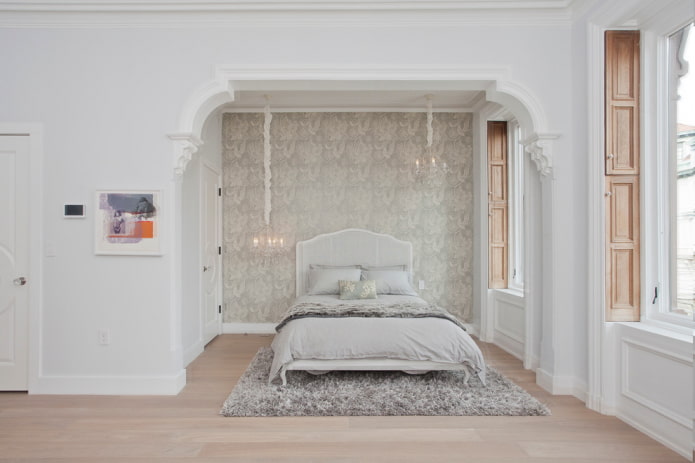
Moldings
It is a fairly popular type of finishing, characterized by simplicity, accessibility and at the same time originality, contributing to the formation of an authentic atmosphere.
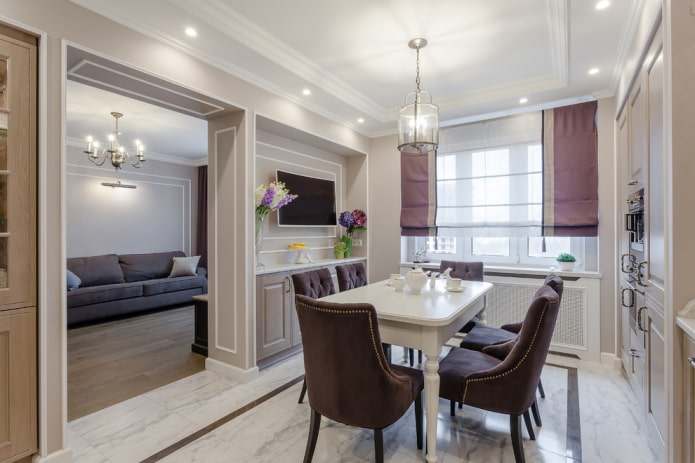
The photo shows a door portal without doors, decorated with white moldings in the kitchen.
Sizes and shapes of doorways
The shape of the portal without a door also plays an important role in creating the interior.
Wide
A large doorway allows you to visually expand and increase the space of the room, adding airiness and light to it.
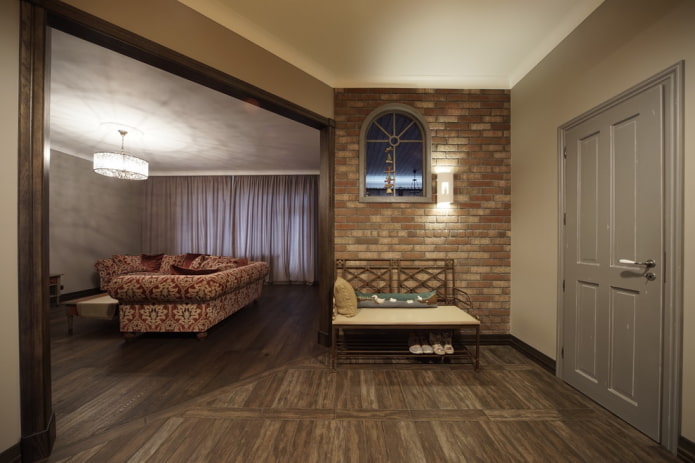
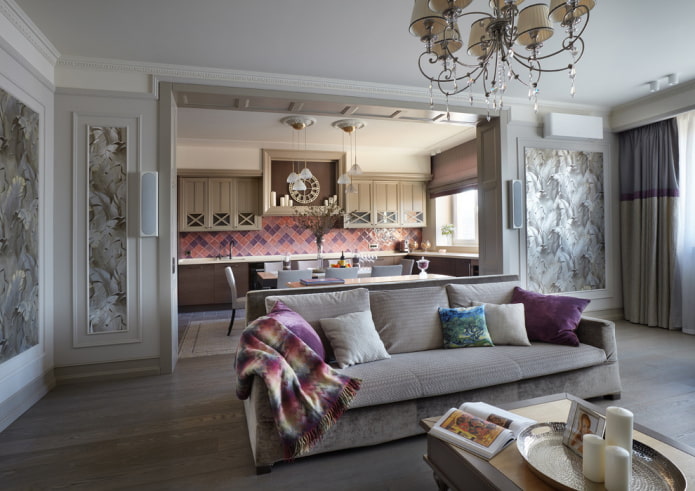
A high opening to ceiling
It is a very noticeable and effective detail, orienting the interior layout. In addition, a high opening can visually raise the ceiling.
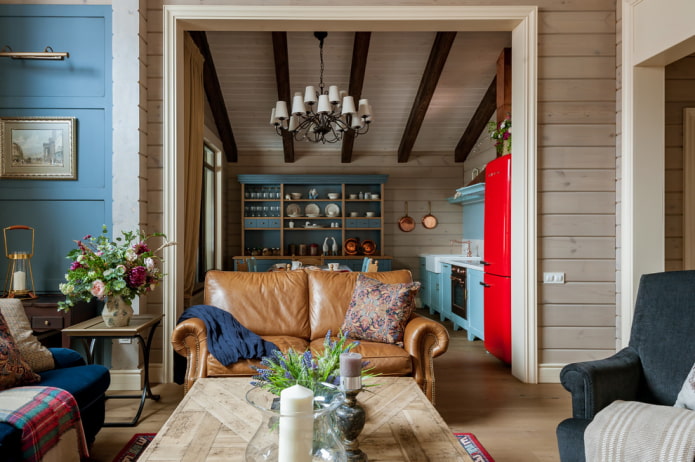
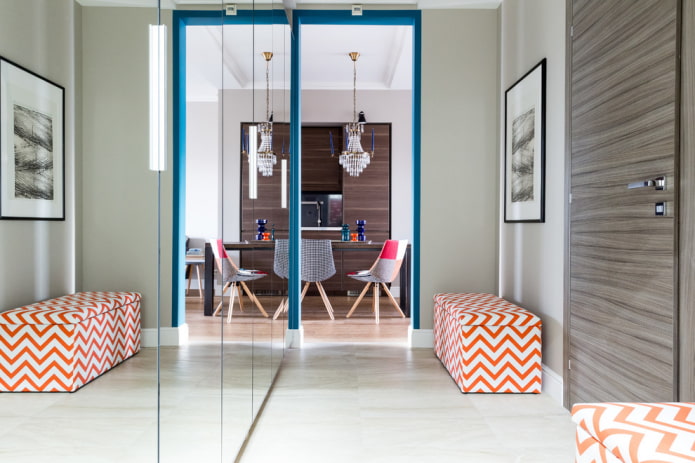
Arched
It provides an opportunity to somewhat soften the angularity of the surrounding space and is a particularly popular form when decorating a passage without a door.
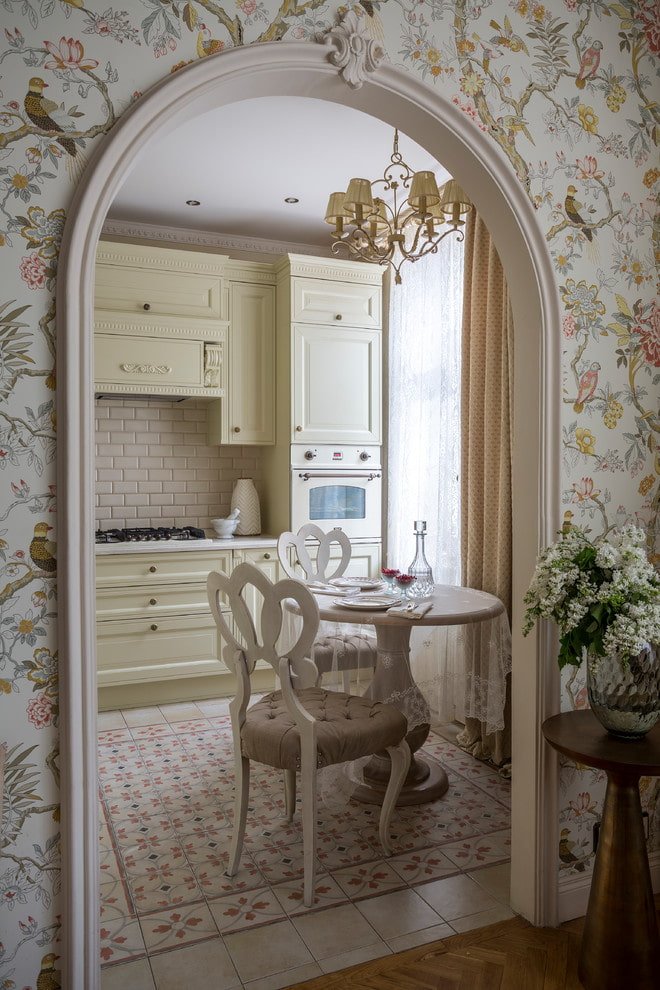

Narrow
A non-standard narrow opening will give the room additional height and make the interior much more proportional.

The photo shows a bathroom interior with a narrow door portal without doors.
Corner
A doorless portal located in the corner is a rather creative solution that gives the environment a unique creative look.
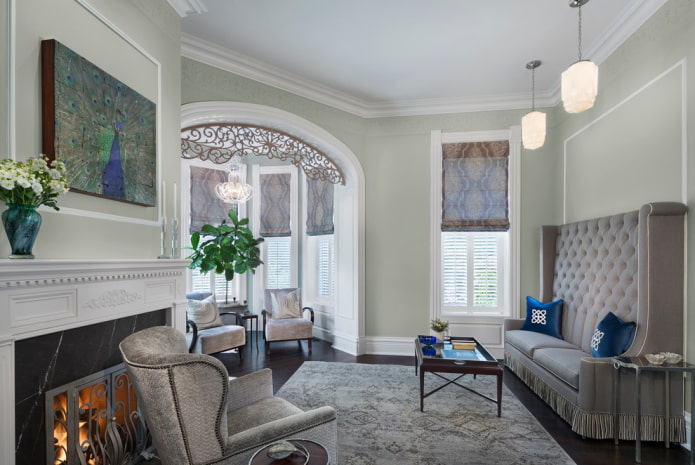
Semi-arch
It is a curvilinear structure with a right and rounded angle. A semi-arch is equally appropriate for both wide and narrow portals, it does not visually clutter the space and does not weigh down its appearance.
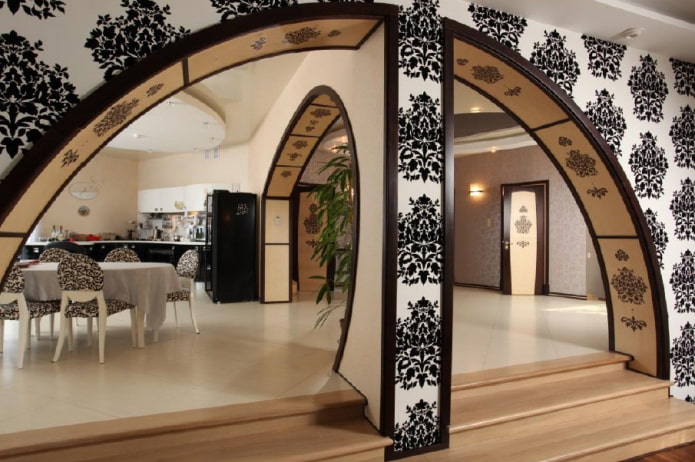
The photo shows semi-arches framed with architraves and decorative corners in wenge shade.
Figured
Fantasy, asymmetrical designs can have a variety of complex shapes or even be supplemented with all sorts of auxiliary details, such as shelves, niches, columns or lighting. Curved open passages undoubtedly become a bright interior element, attracting attention and setting the tone for the entire environment.
The most popular material for creating these openings is plasterboard.
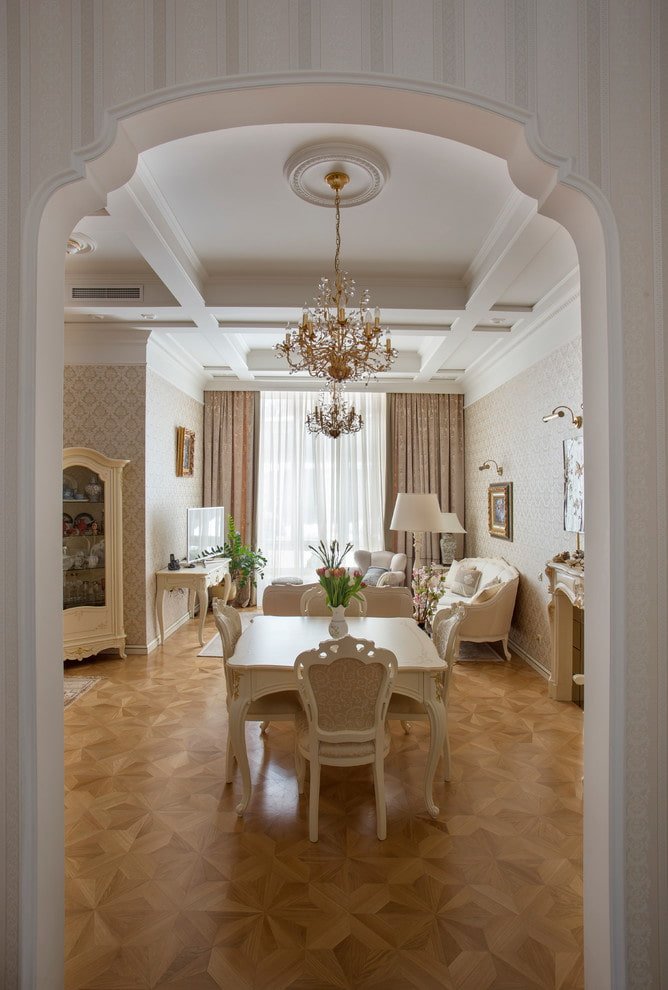
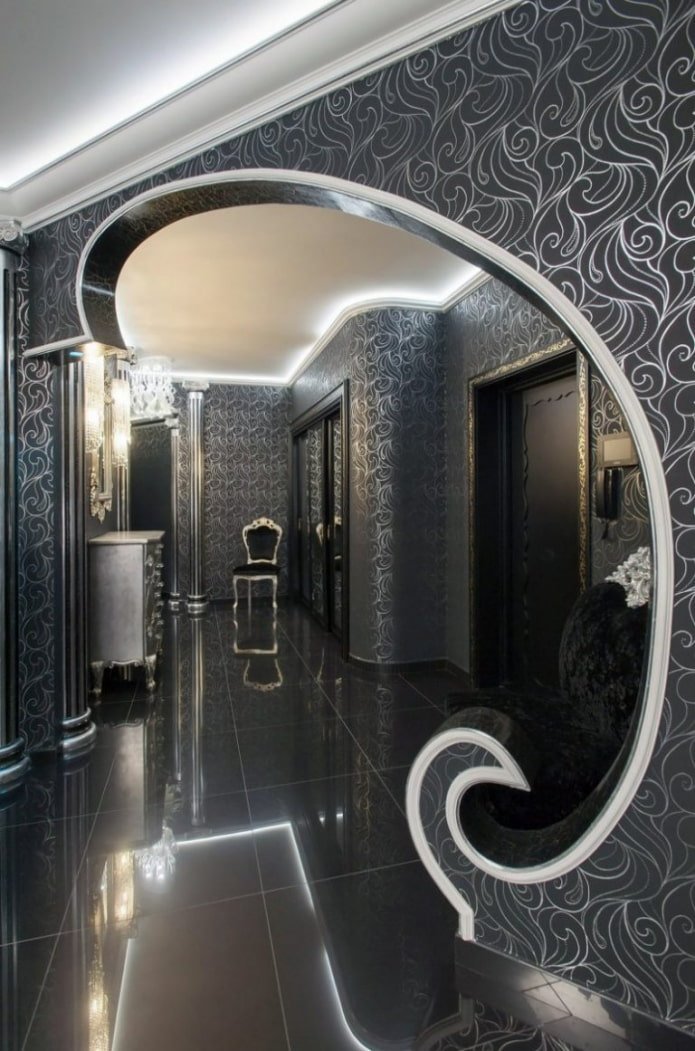
Photos of decorating an opening in the interior of rooms
Design options for interior passages.
Opening to the kitchen
More practical and easy-to-clean materials are used for finishing the passage. In addition, a doorless portal allows you to connect the kitchen with the hallway, living room or dining room, thereby significantly expanding the space, uniting them and making them one comfortable and multifunctional area.
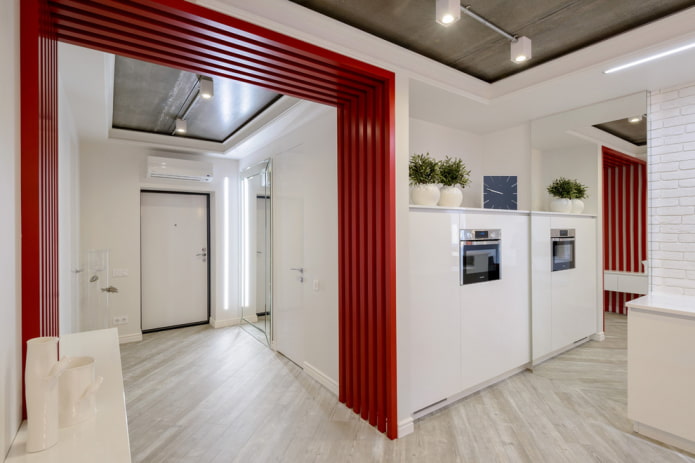
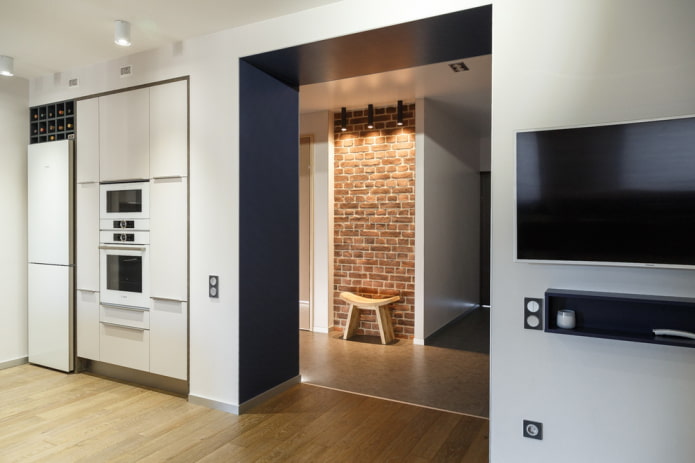
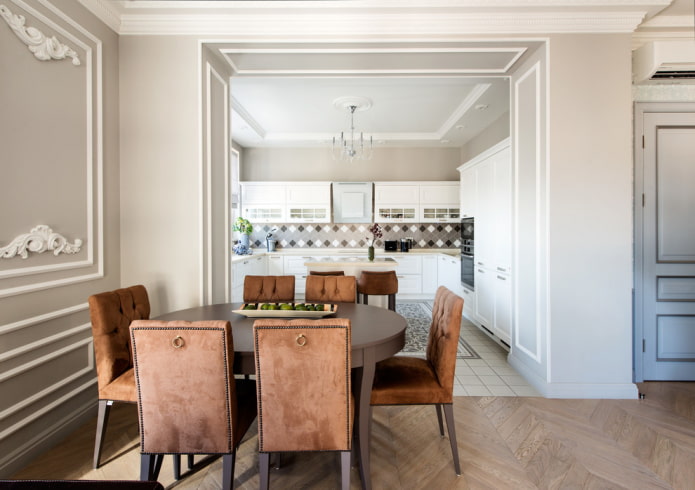
The photo shows a doorway decorated with moldings in the interior of a kitchen-dining room.
Balcony
This design of the balcony block will make the room much brighter and expand the usable area. In order for the loggia and the adjacent room to be perceived as a single composition, it would be better to decorate them with decor and furniture in the same style.
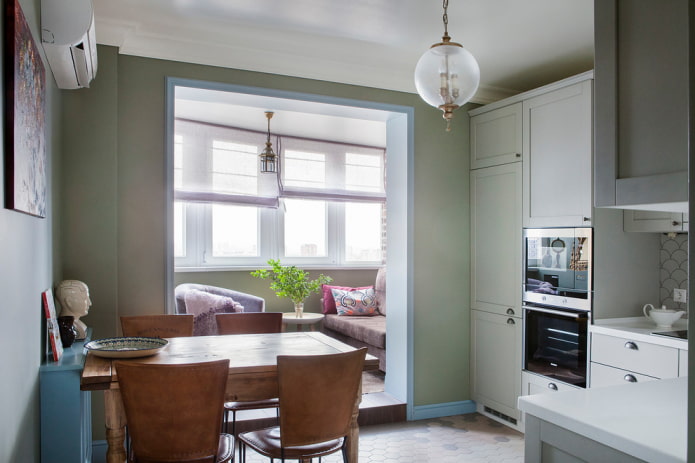

In the living room and hall
In a small apartment, such as a Khrushchev, they often refuse door panels between living room and hallway. This provides an opportunity to create conditional zoning and at the same time expand these two rooms.

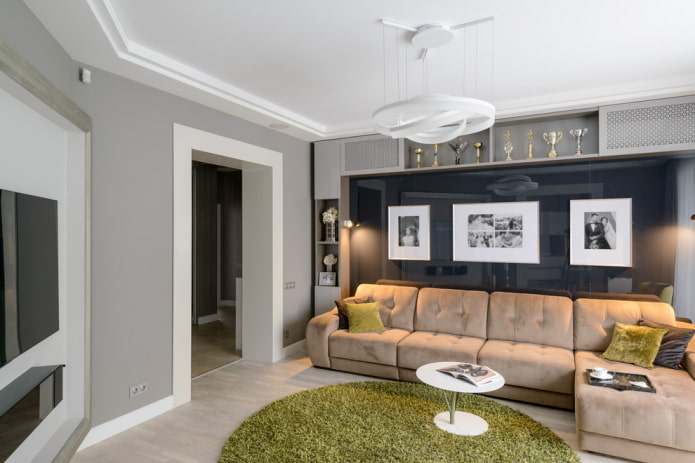
In the corridor and hallway
Here, the open passage is often decorated with artificial stone, wood or textured plaster. Also, the slopes of the structure are complemented with overhead panels in the tone of the entrance doors.
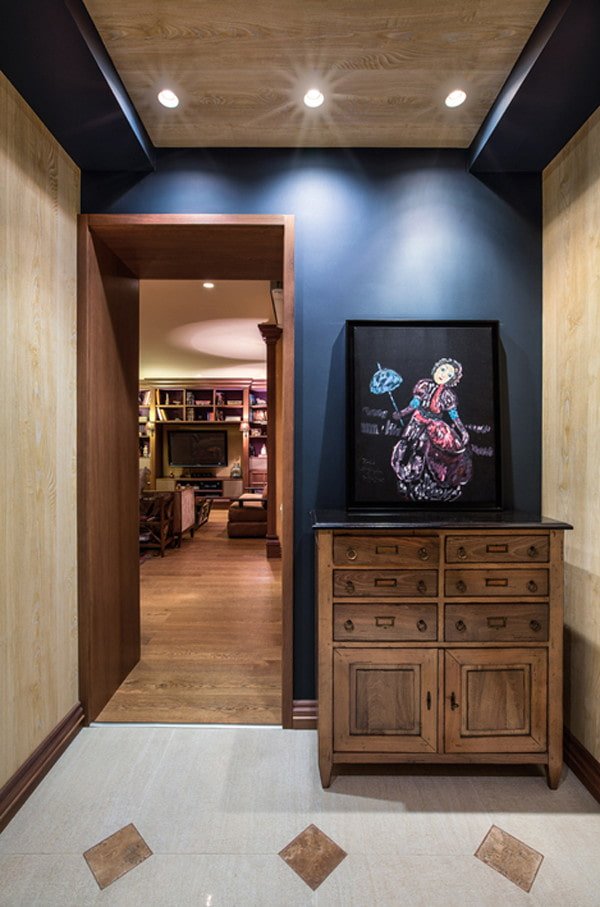

To the dressing room
If the dressing room is combined with a fairly small and cramped room, the absence of a door will be an appropriate solution, allowing you to add freedom to the space.
